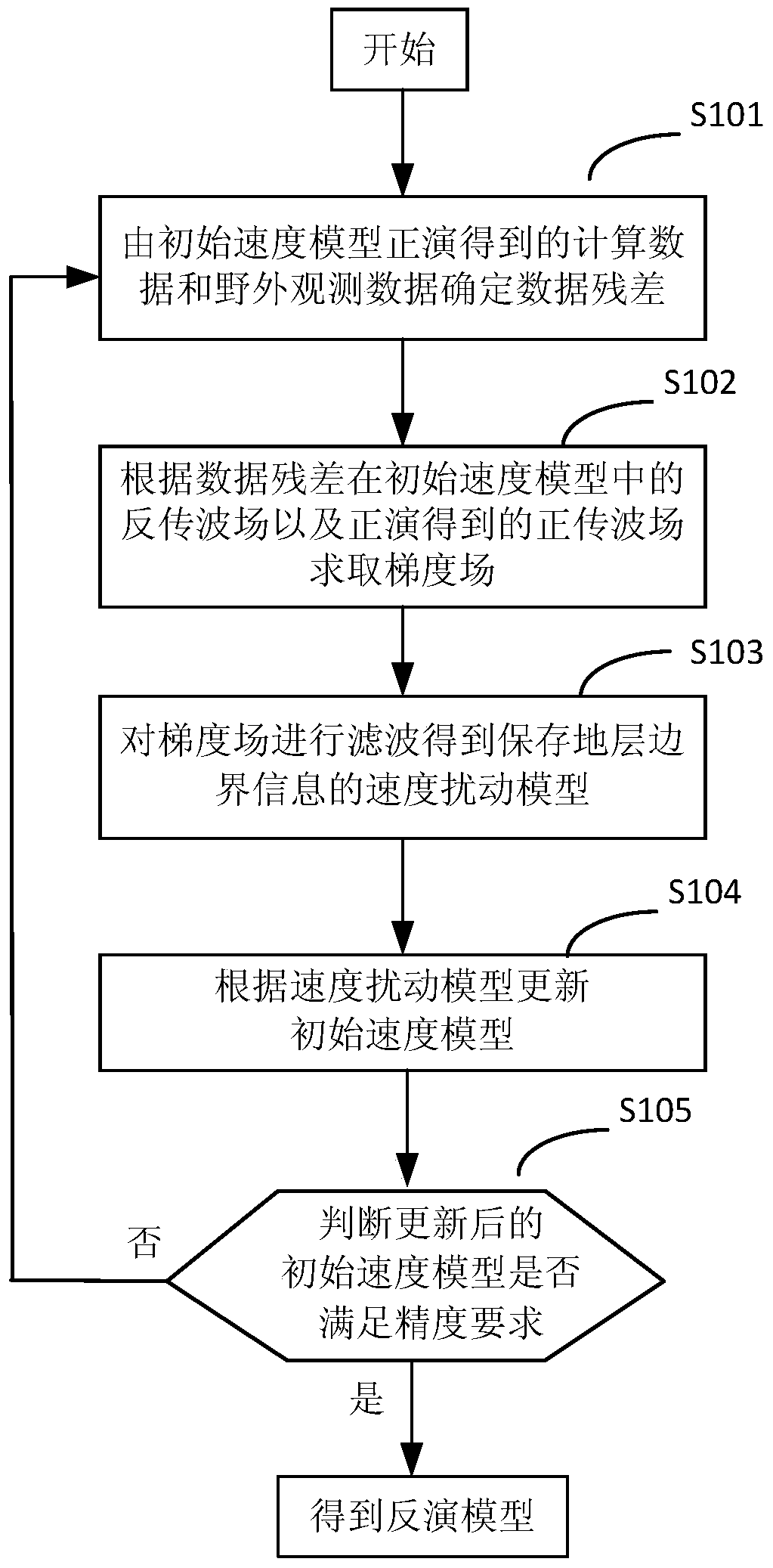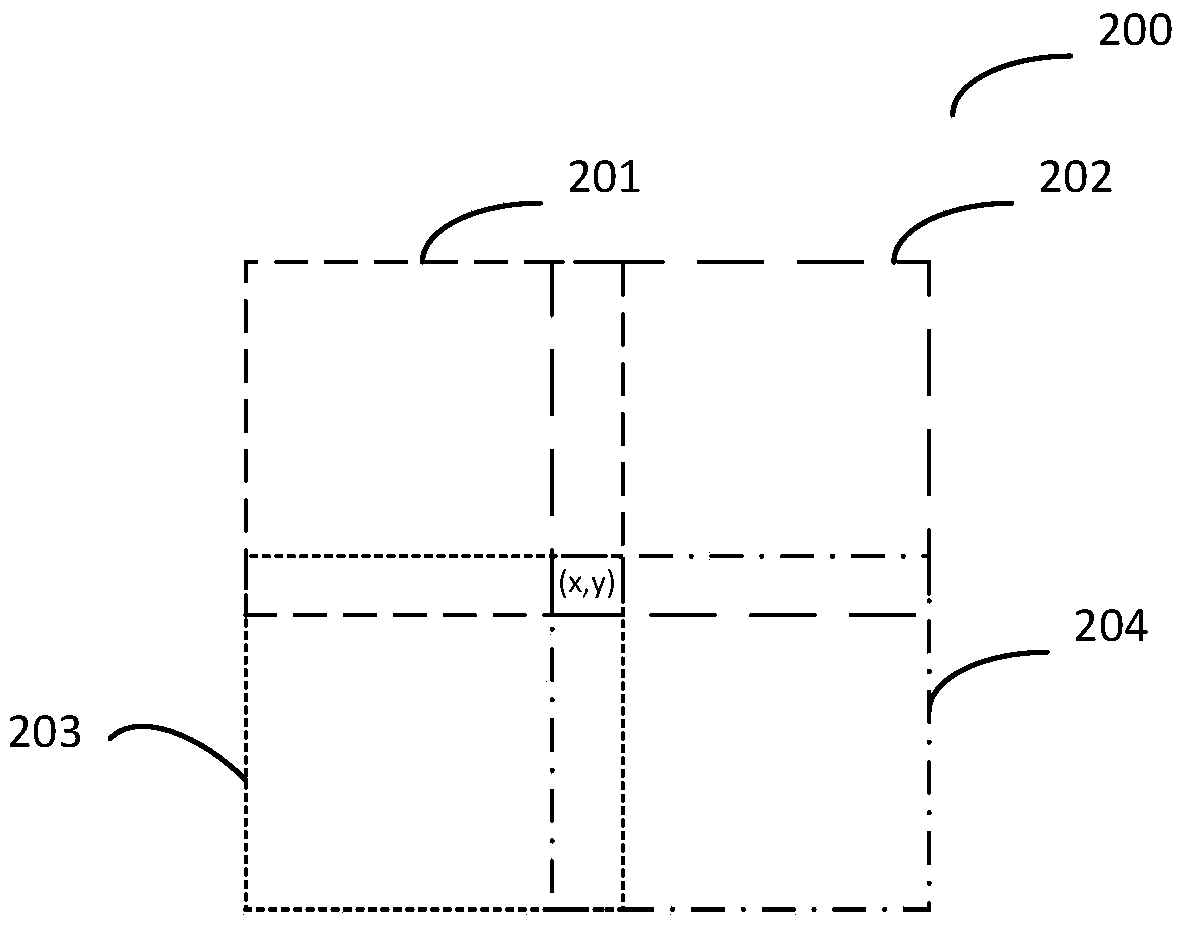A full waveform inversion method and system based on gradient processing
A full waveform inversion and gradient technology, applied in the field of geological exploration, can solve the problems of large amount of calculation, cumbersome calculation process, and difficulty in obtaining prior information, so as to achieve the effect of stable inversion and improved inversion accuracy
- Summary
- Abstract
- Description
- Claims
- Application Information
AI Technical Summary
Problems solved by technology
Method used
Image
Examples
Embodiment 1
[0055] figure 1 It is a flow chart of the steps of the full waveform inversion gradient processing method of this embodiment.
[0056] First, in step S101, the data residuals are determined from the calculated data obtained from the forward modeling of the initial velocity model and the field observation data. This data residual is expressed in the form of a least squares objective function:
[0057]
[0058] Among them, △d is the residual vector, that is, based on the initial velocity model m 0 The difference between the calculated data and the seismic data. The superscript + indicates an adjoint operator.
[0059] Then step S102 is executed to obtain the gradient field according to the backpropagation wavefield of the data residual in the initial velocity model and the forward wavefield obtained from the forward modeling.
[0060] Among them, the backward propagation wave field is the wave field data of the data residual at the receiver point in the initial velocity m...
Embodiment 2
[0091] This embodiment provides a full waveform inversion system based on gradient processing. Such as Figure 9 As shown, the system includes a residual calculation module 91 , a gradient calculation module 92 , a disturbance model calculation module 93 and an update module 94 .
[0092] Wherein, the residual calculation module 91 determines the data residual from the calculation data obtained by the forward modeling of the initial velocity model and the field observation data. The gradient calculation module 92 is connected with the residual calculation module 91, and is used to obtain the gradient field according to the backward wave field of the data residual in the initial velocity model and the forward wave field obtained by forward modeling. The disturbance model calculation module 93 filters the gradient field to obtain a velocity disturbance model that preserves formation boundary information. The update module 94 updates the initial velocity model according to the ...
PUM
 Login to View More
Login to View More Abstract
Description
Claims
Application Information
 Login to View More
Login to View More - R&D
- Intellectual Property
- Life Sciences
- Materials
- Tech Scout
- Unparalleled Data Quality
- Higher Quality Content
- 60% Fewer Hallucinations
Browse by: Latest US Patents, China's latest patents, Technical Efficacy Thesaurus, Application Domain, Technology Topic, Popular Technical Reports.
© 2025 PatSnap. All rights reserved.Legal|Privacy policy|Modern Slavery Act Transparency Statement|Sitemap|About US| Contact US: help@patsnap.com



